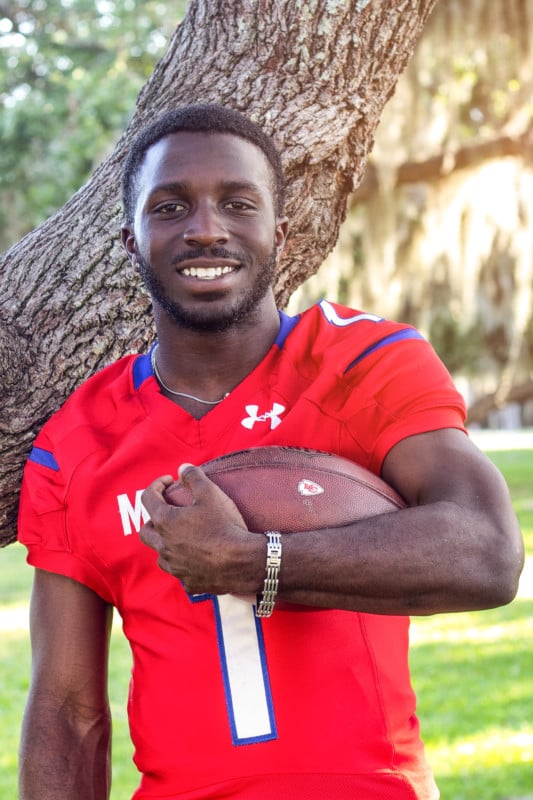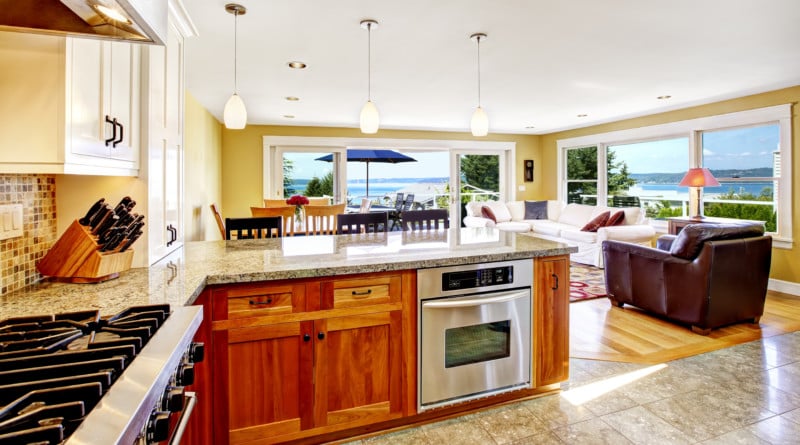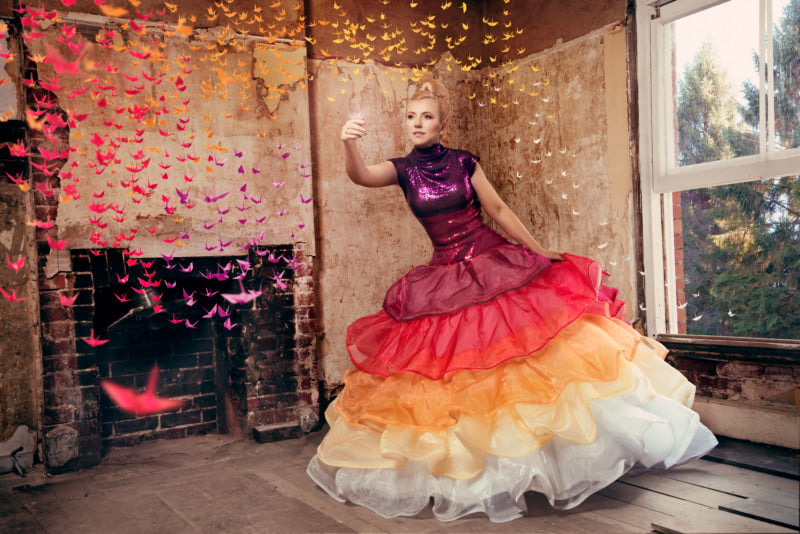15 Types of Photography: Photo Genres You Should Know

The world of photography is massive. Not only is there a litany of choices when it comes to cameras, lenses, accessories, and other equipment, but photographers also have a choice of countless genres in which to experiment. Often, photographers gravitate towards genres that are attractive to them for various reasons or that involve content that is important to them.
Let’s take a moment to explore the primary genres of photography and view some examples of each. Many more types exist, but most can be sorted under one of these primary genres.
Table of Contents
Landscape Photography
One of the most popular types of photography for the last one hundred years or more, landscape photography involves capturing the natural world around us in a way that makes the viewer feel as if they are there. The process is simple, satisfying, and therapeutic.
Examples of landscape photography include horizons, oceans, lakes, mountains, waterfalls, deserts, and beaches. Although similar in many ways, landscapes differ from nature photos in that they are usually wider vistas capturing a much larger scene, whereas nature photography focuses more on the objects within that scene on a smaller scale, such as trees, flowers, birds, or other wildlife.

Landscape photography usually involves motionless subjects, so shutter speeds and apertures can usually be set and left alone until the natural light changes. Although different lenses and focal lengths can be used depending on what the photographer is trying to achieve, landscapes are generally captured using wider focal lengths such as f/11 and above to capture a grand sense of scale.
Since the scenes are fairly static, tripods can be used to assist in producing a sharp, steady photo. Varying outdoor conditions make a weather-sealed camera a smart choice.
Nature Photography
The capture of nature is another one of the most popular forms of photography. This genre involves capturing objects in the natural world around us, primarily flora and fauna. Subjects could include flowers, animals, plants, trees, and other living objects. While landscape photos can be considered nature, they are usually separated into their own genre, and nature photography generally focuses on the inhabitants within a larger ecosystem.

The scope of nature photographs can be large, or very small, and usually puts an emphasis on the visual aesthetics through the use of shallow depth of field, creative composition, and other techniques. Nature photography can be broken down into subgenres, including wildlife, macro, bird photography, and more.
Portrait Photography
Portrait photography, unlike the previous two genres, almost always deals specifically with people. Portrait photography (also referred to as portraiture) is a type of photography that focuses on capturing people in various environments. Emphasis is placed on conveying the personality, character, and intentions of the subject. Many subgenres exist including environmental, boudoir, pet photography, glamour, and group/family photography.

Portraiture usually involves the use of lighting equipment (unless the session is taking place outdoors in natural light) and posing the subject to create the desired scene. Studio setups are sometimes used, providing consistent lighting through strobes, continuous lighting, backdrops, and reflectors.
Photographers in this field usually prefer full-frame or medium format cameras equipped with fast telephoto lenses, starting at 85mm and higher.
Street Photography
Street photography involves the capture of people involved in their daily lives, or inanimate objects or buildings, sometimes (but not always) in a city or street setting. These captures are almost always candid in nature and are usually accidental or chance encounters.
Street photography can be dynamic, voyeuristic, and sometimes intimidating for the photographer. There is sometimes interaction between the photographer and the subject, two people who have presumably never met or spoken before.

Photographers who shoot this style generally prefer smaller, lighter camera bodies and prime lenses, in exchange for the longer focal length of telephoto lenses. Not only is this type of setup lighter in weight, the smaller profile assists in becoming less obvious in the environment, and therefore better able to discreetly frame your subjects.
Read more: A Complete Guide to Street Photography
Architectural Photography
Architectural photography usually falls into one of two categories: shooting exteriors or interiors of buildings and other landmarks, or photographing commercial real estate properties for the purpose of advertising their rental or sale.
Primarily, real estate photography is the form we see the most, as thousands of properties are put up for sale each day, and photographers who can take good photos of these properties and make them look great are in high demand.

Shooting real estate photography is generally slower-paced than other forms, and allows for more time to set up the necessary shots. As with landscape photography, tripods are needed to steady shots that may be flirting with slower shutter speeds due to lighting conditions. Lenses capable of wide angles are required since the interiors of most properties limit the amount of available space, and the photographer will need to capture a larger frame of the scene.
Read also: A Complete Guide to Real Estate Photography
Sports Photography
Sports photography is an exciting and fast-paced subgenre that involves the capture of competitive sports, games, and other activities, usually in a journalistic capacity. Sports photographers are usually employed and paid by various media outlets that use the images in stories or articles, sometimes on a freelance basis.
Although it depends on the sport being covered, sports photography generally involves shooting several frames in quick succession to capture a specific moment. This means that a full-frame camera featuring a fast burst rate and a fast zoom lens is usually preferred. Zoom lenses will allow the photographer to get in close to the action while still maintaining distance, and bigger apertures will make it easier to separate the subject from the background.

Even though mobility is important, photographing most sports demands sharp focus. Many photographers employ equipment such as monopods, which are lightweight and allow them to quickly provide steady support for the camera.
Abstract Photography
Abstract photography is probably one of the harder genres to describe accurately, primarily due to the wide range of content. By its nature, abstract work is subjective and usually is a different perspective of an object or scene. Sometimes it is reduced to nothing more than variations of color, shapes, patterns, or other forms. Hiding the entire object from view this way is usually a defining characteristic of this genre.

ICM (intentional camera movement) and long-exposures can produce abstract pieces using motion blur or slow shutter speeds, smoothing edges and producing a more vague image. Many examples are created from close-up or macro shots of objects, reducing them to more generalized shapes. Shooting abstract photography does not require specialized equipment other than perhaps the aforementioned macro lenses. Instead, techniques and variations of the exposure triangle create these images. Abstract images have been shot on everything from medium format camera systems to smartphones.
Astrophotography
Astrophotography is an evolving and exciting subset of photography that involves the capture of the night sky and objects within it, including planets, stars, and galaxies. These photos can range from landscapes involving the night sky and stars to shots captured through a telescope that concentrate on a planet, moon, or even a galaxy or other distant object in space (commonly referred to as deep sky astrophotography).

The equipment setup required for this subset of photography depends on which objects you are trying to capture. Regardless, a camera sensor with a higher ISO sensitivity is desired, as most objects in the night sky are faint and require the collection of as much light as possible.
Wide-angle lenses are also usually preferable when capturing sweeping views of the night sky while telephoto lenses and telescopes are better for capturing the moon and planetary photography.
Most astrophotographers invest in equipment such as a sturdy tripod, telescope, guide telescope, star tracker, and an equatorial mount, as these assist in capturing sharp images of the objects you’re interested in while accommodating the rotation of the earth, which can make this type of photography challenging.
Composite Photography
Creative composite photography has been gaining more attention in recent years, partially due to some negative sentiment surrounding it, usually when associated with journalistic or editorial images. But as long as the imagery is being presented for what it is, artwork composed of different exposures and modified digitally, composite photography is a valid genre with potential for imagination and beauty in its imagery.
A simplest and most basic version of a composite would be replacing a sky in a scene by digitally removing the sky in an exposure and replacing it with another sky, referred to as a technical composite.

Artistic or creative composite photography is the practice of creating new, sometimes fantastical or imaginary scenes by compositing separate elements together in layers through a digital imaging program such as Adobe Photoshop. Individual parts of the image are layered together against a background, and then masked and blended to complete the final scene.
Event Photography
Event photography is a wide-open field of possibilities, as our world is full of a multitude of events and gatherings outside of the usual wedding. This subset involves capturing candid as well as prearranged shots of people, places, and objects involved in the event. The role of the event photographer is to document the event, but also to apply an amount of artistic composition so that the event is presented in a pleasant, positive way.

Taking a job photographing an event will usually require interacting with several people, including planners. Long hours on your feet may be involved, as well as unrehearsed interactions with several people, moving quickly from point to point.
Different focal length requirements requiring quick changes mean either a couple of prime lenses or a fast telephoto lens would be the best bet. Most event photographers bring two camera bodies, as not only do they have a backup camera in case there are issues with the primary, but also since they can load the camera bodies with two different lenses, and quickly change between the two.
Editorial Photography
Editorial images refer to photographs that are captured to be used in printed or digital publications, such as newspapers, magazines, news websites, or blogs. The purpose of these images is to serve as a storytelling aid, accompanying the article copy and giving the reader a visual representation of the subject matter.
This is different from commercial photography, which is instead intended to sell products by presenting them in an appealing way. It also has its differences from photojournalism, as editorial shooting involves more artistic interpretation, presentation, and subjectivity.
Many examples of this type of photography include portraiture and fashion but can also require knowledge of other sub-genres such as still life, food, and architecture. Usually, the photographer would work with an editor of the publication that would direct them as to what type of images are required for the story or article that is being created.

Although equipment requirements vary widely for this type of work, a full-frame DSLR or mirrorless system is usually preferred. Editorial image captures can happen on location, such as in a restaurant, or in a photography studio. These situations will call for different lens setups, depending on what is being captured. Lighting requirements change depending on location as well. Small and light setups are required for on-location work, while studio photography will mean the use of extended lighting kits featuring strobes, continuous LED lights, and reflectors.
Wedding Photography
Wedding photography has a reputation for being tough, and for good reason. Instead of being a completely separate genre, it is a combination of portraiture, event, macro, and food photography. Wedding photographers are expected to provide memorable and technically sound images in a fast-paced and ever-changing environment, with many people and other subjects involved.
Because of this, most photographers shooting weddings employ the services of a second shooter, to ensure all of the desired photos will be captured.

At weddings, the primary concern is lighting, as the events progressing through the evening usually occur at night, and indoors. A full-frame system with fast zoom lenses to accommodate low lighting is desired, and the photographer would almost certainly want to shoot in RAW, as many exposure adjustments will likely need to be made in post-processing.
Product Photography
Another sector of commercial photography is capturing images of products for advertising. With the continued takeover of online commerce, the opportunities for photographers to provide merchants with clean, attractive images of their products are increasing each year. The goal is to present the products in as attractive and professional a manner as possible.

Generally, clients will want the images shot on a plain, clean background, separating the product from any distraction. Usually white or black in color, the background can take many forms, from a simple cloth hung behind the product, to a lightbox or light tent that controls the softness of the light being used.
Tripods are generally used to ensure sharp images, and to help with orienting the camera into whatever position is required. Sometimes tables or other platforms are helpful, and lighting is almost always required unless the photos are being captured outdoors in natural light. These lighting setups usually consist of continuous LED lighting systems, which allow the photographer to adjust brightness and color temperature on the fly very easily.
Travel Photography
Travel photography is exciting, fulfilling, and exhilarating. While it would rank high on a list of desirable photography careers, it’s not without its caveats and difficulties.
This type of photography could be traveling and capturing images yourself for sale later as fine art pieces, or commissioned jobs for brands or companies that need the images for journalism or advertising. Travel photography can involve shooting landscapes, nature, or capturing images of people and the places they live and work.

As this type of photography involves varying locations and environments, equipment requirements will focus just as much on stability and reliability as they will on image quality. Harsh outdoor environments with different temperature ranges and precipitation expectations mean equipment should be solid and weather-sealed. Variety is the key, as the photographer will need to expect different shooting requirements. A mixture of zoom and prime lenses is preferable, along with a lighter camera setup, possibly even a mirrorless system.
Food Photography
Food photography has exploded as a genre in recent years, due to many factors, including the expansion of social media as a form of advertising and the rise of mobile photography. But for advertising purposes, high-quality photographs of food items are an absolute requirement for many restaurants, coffee shops, bars, and markets. While mobile food photography is definitely a big deal today, for this article we’re focusing on using DSLR or mirrorless setups to capture food photos for advertising.
The golden rule of food photography is that the image is worthless if it doesn’t make the food look appetizing. While there are many tricks commonly used to artificially make food look even better or fresher, it is possible to take great images of food with just a little preparation and good light. Unlike product photography, photographs of food will be taken in the context of their background, which will usually be other food items, drinks, tables, bar tops, and other surfaces. These should provide a canvas on which the food item can be highlighted.

Indirect natural lighting is best for these types of photos, so continuous lighting or flash setups are usually not needed outside of a studio, except for perhaps a softbox to add light where needed. Tripods can be used in most situations to provide a steady base for the camera, and lenses with wide apertures are necessary so that it’s possible to shoot with a shallow depth of field and accentuate the dish, separating it from its background.
Wrapping Up
While this wasn’t a completely comprehensive list of all the photography niches that exist, we have discussed the most popular ones here. Regardless of what genres of photography speak to you or which one you are personally working or involved in, it’s always beneficial to experiment and explore as many different types as possible. This will challenge you to learn new techniques, spark more creativity, and expand your skillset as a photographer.
Image credits: Photos licensed from Depositphotos



